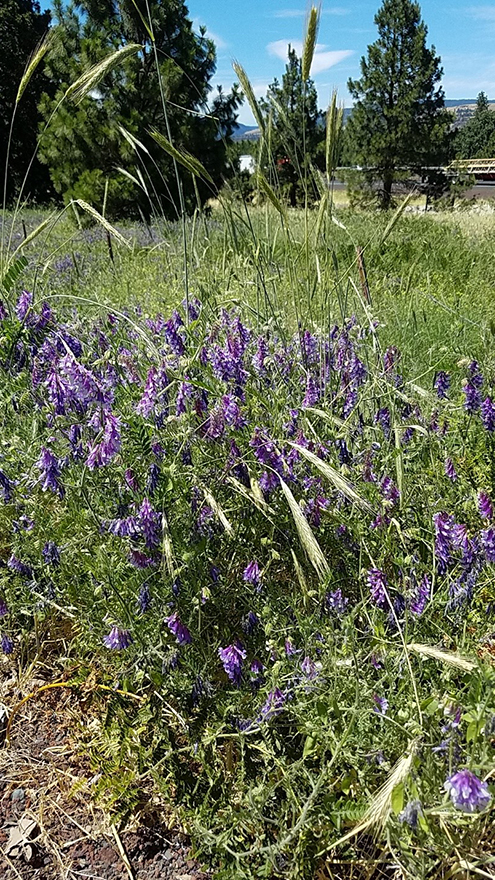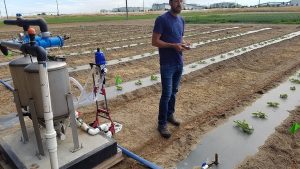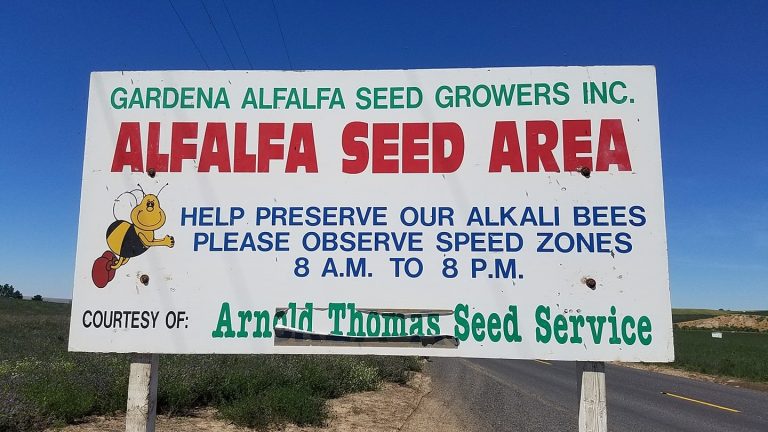By Andony Melathopoulos, OSU Assistant Professor – Pollinator Health Extension
The Oregon Bee Project headed to Hermiston and Milton Freewater on the 19-21 June to meet growers and beekeepers to get a better sense of the pollinator initiatives and need for resources in the region. We were also excited at the prospect of seeing the state’s two other managed bee species in action; the cavity nesting alfalfa leafcutter bee and the ground nesting alkali bee, both of which are critical to alfalfa seed production.
Day 1: Driving to Hermiston.
The drive down the Columbia River gorge provided an opportunity to sample some of the late summer bee communities along the Highway. There was far less forage available than in the spring when the balsamroots and lupines covered the meadows, but we did find patches of vetch (picture left – by Andony Melathopoulos) that were completely covered with a variety of Megachilidae, bumble bees (particularly B. griseocollis). It impressed on us the potential importance of small patches of flowering plants in the drier regions of the state at this time of year.
Day 2: Hermiston.
We started the day with visits with two OSU faculty with considerable experience with pollinators, Drs. Sandra DeBano and Scott Lukas. Dr. DeBano reviewed the native bee work happening in Eastern Oregon and Dr. Lukas provided us with a crash course in watermelon cultivation and how something like soil health might impact strategies for enhancing pollinator habitat around watermelon fields (photo below left). Watermelons were already in bloom and one grower explained the challenges of growing seedless watermelon and the importance of building a strong working relationship with beekeepers. We also visited a very large farm that had considerable dedicated wild pollinator habitat on the edges of their irrigation pivots, using the outer sprinkler to help establish the pollinator plants, but then cutting the water the following year.
We ended the day at a grower who recently began growing alfalfa and their experience cultivating alfalfa leafcutter bees. The one remark that stuck in mind was their interest in getting alkali bees, but their difficulty in getting resources on how to establish beds.
Day 3: Milton Freewater.
OSU Extension Horticulturalist Clive Kaiser showed us around the diverse farming systems around Milton Freewater. From alfalfa seed, to orchard crops to newest federally approved federal American Viticulture Area, Milton Freewater has it all. We began the day at some pollinator plantings at high value wine grapes in The Rock District, one of the most distinctive grape-growing regions in the Pacific Northwest, where grapes are literally growing out of a cobblestone landscape. Next we went looking for alkali bee beds. Alkali bees (Nomia melanderi) are the only solitary bee managed on a sizable scale in the US and phenomenal pollinators of alfalfa seed (see below). We visited one producer who had recently refurbished the beds the bees nest in by trenching new irrigation pipe into the salty soil where the bees make their home. He told us that his bed was one of the original beds that were established in the late 1950s, but that it had fallen into neglect when he took over. On the day we visited there was a cloud of bees flying in and out of the beds to the surrounding alfalfa fields. The long flight range of these bees, means that they frequently cross the road, prompting growers to put up signs to ensure drivers reduce their speed to increase bee survival.




